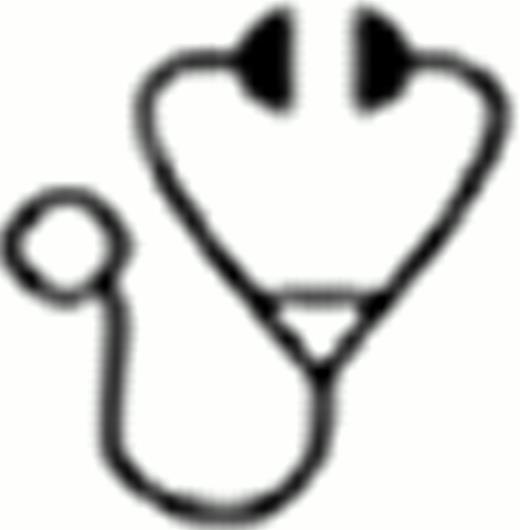Abstract
Abstract  749
749
We performed an integrated analysis of four phase 3 studies independently conducted by HOVON/GMMG, IFM, PETHEMA/GEM and GIMEMA European cooperative groups. These studies were designed to compare standard-dose bortezomib-based (V-b) induction regimens (VD or VTD or PAD) vs non bortezomib-based (NV-b) treatments (VAD or TD) before single or double autotransplantation (ASCT) for newly diagnosed myeloma (MM) patients (pts). In three trials bortezomib was also planned as (part of) post-ASCT consolidation or maintenance therapy. Aim of this analysis was to evaluate efficacy results of bortezomib incorporated into ASCT (V-b ASCT) vs ASCT not including bortezomib, particularly in pts with high-risk cytogenetics (HR-cyto) defined by t(4;14) and/or del(17p). A total of 2169 pts were enrolled and were followed for a median of 37 months (mos). Data on cytogenetics were available in 1894 pts. In the overall population, V-b regimens significantly increased the post-induction rate of CR (14.5% vs 4%, p<.001) in comparison with control treatments. CR rates for pts with HR-cyto who were treated with V-b or NV-b induction regimens were 18.6% vs 0.6% (p<.001). Median PFS in the group of pts receiving V-b ASCT was 41.5 mos vs 33 mos for the control group [HR stratified (strat.) by trial=0.76, p<.001]. The corresponding values were 32 vs 22 mos (strat. HR=0.58, p<.001) for pts with HR-cyto and 47 vs 38 mos (strat. HR=0.81, p=.010) in the group lacking HR-cyto. PFS benefit with V-b-ASCT was also seen in pts with t(4;14) but lack of del(17p) [isolated t(4;14)] (median: 36 vs 24 mos; strat. HR=0.57, p=.001) and in those with del(17p) but lack of t(4;14) [isolated del(17p)] (median: 27 vs 19 mos; strat. HR=0.58, p=.014). In a stratified multivariate analysis, independent variables associated with extended PFS in the overall population (in addition to the lack of HR-cyto, thrombocytopenia, high β2-m and anemia) included achievement of CR after induction therapy (HR=0.48, p<.001), double ASCT (HR=0.56, p<.001) and V-b-ASCT (HR=0.79, p=.001). These latter variables independently affected PFS both in pts lacking HR-cyto (CR after induction: HR=0.47, p<.001; double ASCT: HR=0.60, p<.001; V-b ASCT: HR=0.84, p=.034;) and in those carrying HR-cyto (double ASCT: HR=0.37, p<.001; CR after induction: HR=0.53, p=.040; V-b ASCT: HR= 0.64, p=.011). V-b ASCT was independently associated with prolonged PFS also in pts with isolated-del(17p) (strat. HR=0.60, p=.023) and isolated-t(4;14) (strat. HR=0.67, p=.037), but not in pts with ultra HR-cyto who carryied both t(4;14) and del(17p). These latter pts had the shortest PFS observed with V-b ASCT (median: 21 mos) and in a multivariate analysis seemed to benefit from double ASCT (strat. HR=0.51, p=.001). Although in the overall population there was a trend in OS favoring incorporation of bortezomib into ASCT (strat. HR=0.84, p=.058), in univariate analysis a significant OS benefit for pts carrying HR-cyto was seen with V-b ASCT (median: 65 vs 41 mos for the control group; strat. HR=0.62, p=.004). In a stratified multivariate analysis, independent variables predicting for prolonged OS in the overall population (in addition to the lack of HR-cyto, high β2-m and thrombocytopenia) included double ASCT (HR=0.40, p<.001) and achievement of CR after induction therapy (HR=0.50, p=.001). Double ASCT was likely to favorably influence OS in pts with both HR-cyto (strat. HR=0.24, p<.001) and ultra HR-cyto (strat. HR.=0.31, p=.034). Results from this integrated analysis of differently designed studies including different V-b induction regimens demonstrated the superiority of bortezomib incorporated into ASCT over NV-b ASCT in terms of higher rates of CR and extended PFS in newly diagnosed MM. PFS benefit with V-b ASCT was retained across subgroups of pts with and without HR-cyto, and was confirmed in a stratified multivariate analysis. In comparison with the control group, V-based ASCT significantly improved the outcome of pts with HR-cyto, but did not overcome the adverse prognosis imparted by t(4;14) and/or del(17p). Results of OS analysis should be cautiously interpreted due to the still short follow-up; more mature data are needed before definite conclusions can be drawn. Finally, apparent benefits observed with double ASCT in the subgroup of pts with HR- and ultra HR-cyto need to be confirmed in prospective randomized studies designed to address this issue.
Cavo:Janssen, Celgene, Millennium: Honoraria, Membership on an entity's Board of Directors or advisory committees; Novartis: Honoraria. Sonneveld:Janssen, Celgene, Onyx: Honoraria, Research Funding. Moreau:Janssen, Millennium, Onyx: Membership on an entity's Board of Directors or advisory committees. Bladè:Janssen, Celgene: Honoraria, Membership on an entity's Board of Directors or advisory committees. Goldschmidt:Celgene, Janssen: Membership on an entity's Board of Directors or advisory committees. San Miguel:Janssen, Celgene, Novartis, Millennium, BMS: Membership on an entity's Board of Directors or advisory committees. Attal:Celgene, Janssen: Membership on an entity's Board of Directors or advisory committees. Facon:Onyx, Celgene, Janssen, Millennium: Membership on an entity's Board of Directors or advisory committees. Lahuerta:Celgene, Janssen: Honoraria. Lokhorst:Celgene: Honoraria. Palumbo:Celgene, Janssen: Membership on an entity's Board of Directors or advisory committees; Celgene, Janssen, Merck, Amgen: Honoraria. Petrucci:Janssen, Celgene: Honoraria. Rosiñol:Janssen, Celgene: Honoraria, Membership on an entity's Board of Directors or advisory committees. Salwender:Celgene, Janssen: Honoraria, Membership on an entity's Board of Directors or advisory committees.
Author notes
Asterisk with author names denotes non-ASH members.

This icon denotes a clinically relevant abstract

This feature is available to Subscribers Only
Sign In or Create an Account Close Modal